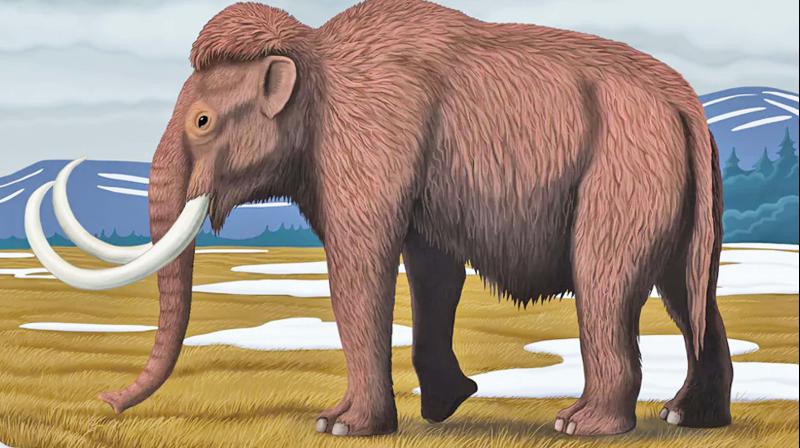Of mice and men, and the woolly mammoth
Luckily the mouse does not have much of a brain to speak of, and is content spending its days being the object of unspeakable experiments.

You have to feel sorry for the common or garden mouse. Let’s face it, the smaller of the rodent family or its big brother, the rat, invariably draws the short straw when it comes to being experimented upon by man. Just think. A scientist in a lab is at a loose end, and suddenly, is seized with this harebrained idea of conducting a whacky experiment with cancer cells. They have been at it for decades with nothing to show for it, but our sadistic scientist brings out one of his army of mice and proceeds to inject it with some third stage cancer cells, mixed with some herbal essence, and the poor mouse, after a few minutes of unbearable agony, decides to give up the ghost, and is soon seen lying on its back, stiff as a board. Another one bites the dust, and our scientist leaves the lab to ruminate over a languorous smoke, thereby ironically exposing his own lungs to a dose of malignancy, his dreams of a Nobel Prize for medicine going up in smoke.
Which brings me to the nub of this essay. I was struck by this startling headline in a recent newspaper report, Mammoths may come back, and we'll have mice to thank for that. We are talking about the woolly mammoth, the hairy precursor to the elephant of today, that existed on earth over 10 to 15,000 years ago, before they gradually became extinct.
A clutch of Japanese scientists have now claimed that they have taken a ‘significant step’ towards bringing this extinct mammal back to life, after they transplanted cells from the carcass of a mammoth into a mouse, where they subsequently detected ‘positive biological activity’. The cells were apparently taken from the 28,000 year-old mummified remains of a woolly mammoth named Yuka, found in the Siberian permafrost as recently as 2010. In case you find all this difficult to take in, as did I, the scientists assure us that the animal died at a very young age and turns out to be one of the best preserved mammoths known to science. Why can’t these Japs just stay at home and play golf? Don’t we have enough problems without bringing long dead creatures back to life? And another thing. Was the deceased mammoth christened Yuka 28,000 years ago, or was it a current working title? Just asking.
Notwithstanding these amazing revelations, what is germane to the issue is the question of how these ancient creatures qualify for the big resurrection? Simple.
Enter stage left the mouse. The scientists from Tokyo or Osaka or wherever, proceeded to extract tissue samples from the well preserved bone marrow and muscle of the mammoth, from which nucleus like structures were collected and, no prizes for guessing, injected into a cell in a mouse ovary. Without getting too gynaecological about it, the scientists tell us that some positive genetic cell division activity was observed.
Obviously very exciting all this, and whether rumours of one Japanese scientist rushing out of his bathtub, yelling ‘Euleka!’, is true or not, I am in no position to confirm. They have cautioned readers not to get too excited about the findings as these are still early days. It may take another 5,000 years before some sign of woolly mammoth activity becomes discernible. Unless of course, the Germans come up with some cells from a Neanderthal man buried in the Arctic zone some 10,000 years ago, which, if injected into a living human being, could extend his or her life by another 5,000 years! Wonder who would be India’s Prime Minister 5,000 years from now. If our mad scientists are any indication, it could be Narendra Modi, healthy and rosy cheeked as ever!
My heart goes out to the pathetic mouse. A helpless little creature, cheerfully darting around the house seeking bread crumbs, being asked to bear the burden of carrying the cell structures of a gigantic creature like the woolly mammoth. Luckily the mouse does not have much of a brain to speak of, and is content spending its days being the object of unspeakable experiments.
What of the future? Will our Japanese friends be satisfied with bringing the woolly mammoth back to life? Why not move on to greater things? If our children want to know what a dinosaur – a Brontosaurus or a Tyrannosaurus – actually looked like, one will have to take them to one of the great museums of the world. There they can stare wide-eyed and awestruck at the skeletally reconstructed remains of these Paleolithic giants. As I write this, word has just come through that the remains of a T-Rex discovered in Western Canada in 1991 is the biggest ever, weighing in at 8,800 kilos and 13 metres in length. ‘This is the rex of the rexes’, exulted the team leader, whilst humming a lyrically rehashed old country and western favourite, ‘All my rexes (ex’s) live in Texas.’
Now that the extinct woolly mammoth appears to be on the cusp of an amazing rebirth, thanks to our nerdy scientists, what is to stop other researchers, thus emboldened, to tinker around with cells they may suddenly discover in some remote part of the world still in the grip of the ice age? They will return to their labs in China or Norway or wherever, and hail their caged mice with a cheery ‘Look what Daddy’s brought for my teeny-weeny Mini Mouse for Christmas? It's a cell implant from a long dead T-Rex. Who’s going to be a big girl now?’ With these tender words of endearment, our Gyro Gearloose will then proceed to inject his pet mouse the carefully preserved cells, and wait for the results to unfold.
While we’re about it, let’s bring the dodo back to life as well, and put an end to all this nonsensical talk about being ‘dead as the dodo’. All you need is a compliant mouse.

